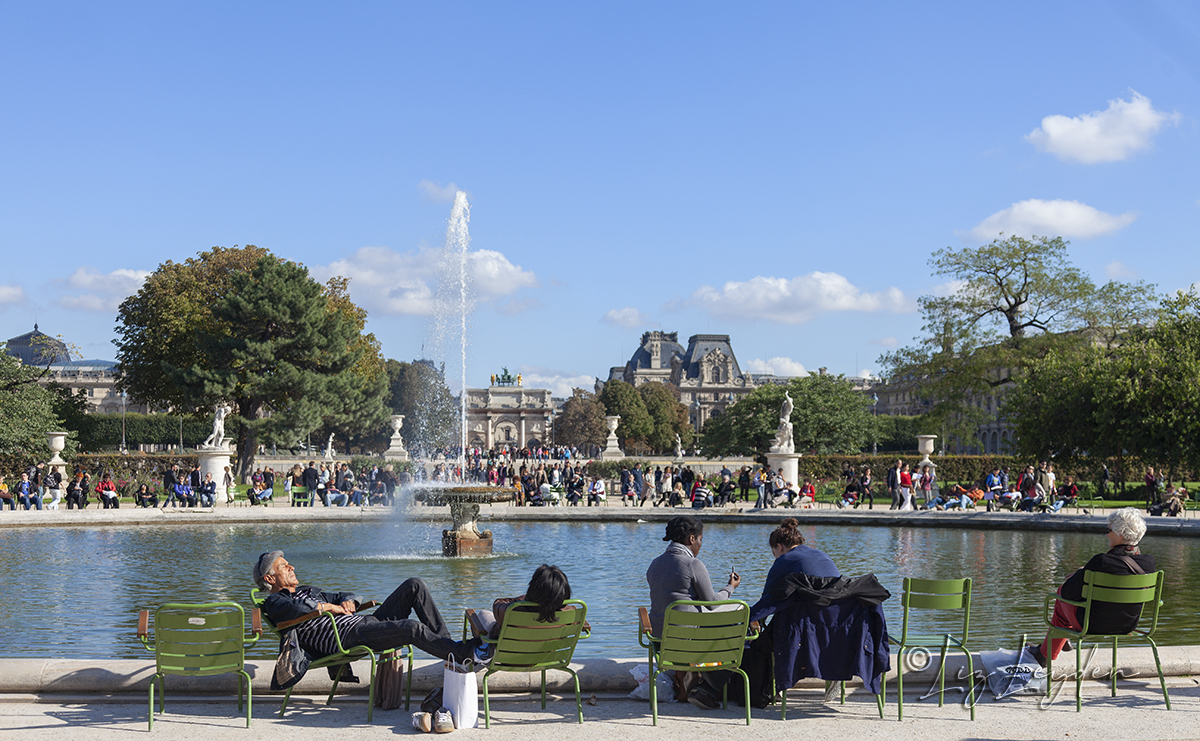People enjoying a summer afternoon around Grand Bassin Rond, the formal pond in the Grand Carré at the eastern end of the Jardin des Tuileries, Paris, France.
The original Jardin des Tuileries was established, in the Italianate style, by Catherine de Medici in 1564. It got its name from the tile factories which previously stood on the site
It underwent some quite radical changes over the next century, during which time it was used as a pleasure gardens by royalty and nobility. It reached its present form under the rule of Louis XIII, when architect André Le Nôtre was commissioned to redesign the entire garden. He transformed the Tuileries into a formal jardin à la française – a style he had perfected at Versailles – based on symmetry, order and long perspectives.
In 1667, the Tuileries Gardens were opened to the public – with the exception of beggars, lackeys and soldiers – at the request of Charles Perrault, (the author of Sleeping Beauty, inter alia).
After King Louis XVI’s removal from power and execution, the Tuileries became the Jardin National of the new French Republic. Since then it has been used as a city centre place of recreation, relaxation, culture and entertainment by all levels of Parisian society, and by French and itnernational tourists.
This photo is copyright © Liz Leyden. All rights strictly as agreed in writing with the author or her agent.
This photo of the Large Round Pond in the Tuileries Garden in central Paris is available to purchase as a stock photo from my portfolio at Alamy.


